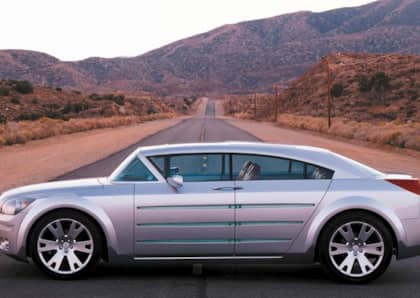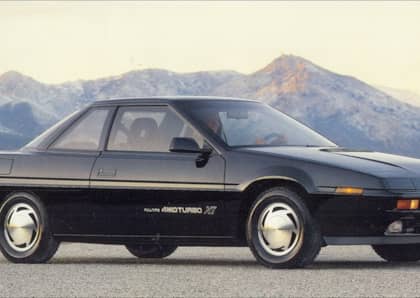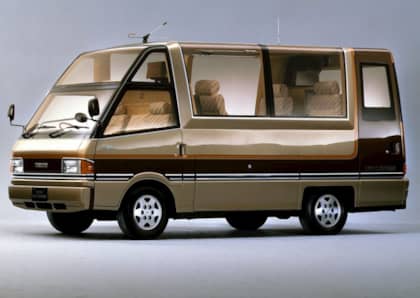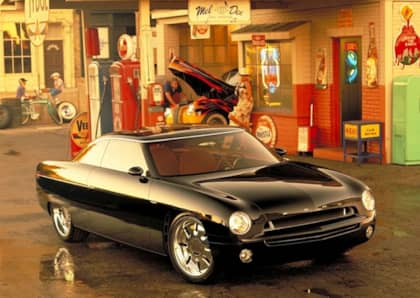Amphicar 770: The Swimming Convertible Nobody Asked For
Flying cars have been a go-to punch line for skeptical anti-futurists ever since the days of Chitty Chitty Bang Bang and pulpy Popular Mechanics puff pieces. Swimming cars, on the other hand? That's a hybrid driving experience that science actually managed to deliver, with the first amphibious automobiles seeing delivery in the United States during the same decade that the Jetsons were whizzing around in their still-fantastical flivvers.
The year was 1961, and Quandt Group had just spent a significant amount of time and $5 million developing the Amphicar, a two-door convertible that could navigate both highways and canals, depending on how you needed to get to work in the morning. If that name sounds familiar, it's because the Quandt family is still knee-deep in the automotive game, currently counting significant shares in BMW and Daimler-Benz as some of their key assets.

Less well-known is Hans Trippel, the designer behind the Amphicar. Interned as a profiteer following World War II, after he was convicted of taking over a Bugatti factory following the Nazi invasion of France, Trippel had long had a fascination with amphibious vehicles. In the early '30s he had experimented with a small run of self-branded land/sea vehicles, and he also used his purloined Bugatti assembly lines to churn out swimmers for Wehrmacht during the occupation.
After a brief distraction designing the gullwing doors on the Mercedes-Benz SL, as well as a foray into a personal brand of land-locked vehicles, Trippel returned to his first love, and West Germany, and penned the Amphicar 770. The name was pure practicality: The convertible was capable of 70 mph on asphalt and 7 knots at sea.
Seaworthy
It would certainly take you a while to get to cruising speed in the Amphicar, given that its initial 1.2L four-cylinder engine, sourced from Triumph, produced just over 40hp and 50 lb-ft of torque in the original model (with later versions nearly doubling that measure). The motor is mounted in the rear of the car, making it easier to drive the pair of propellers tucked up behind the back bumper. The trunk sits up front, where it houses a full-size spare, with additional storage available behind the back seats.

Surprisingly, Trippel elected to keep the Amphicar all-steel rather than use fiberglass, a lighter and more common material in the boating industry at the time. That being said, the Amphicar's metal is significantly thicker than what one would find on a production vehicle from the same era, and both doors are sealed using a pair of thick rubber strips. Rolling up the windows provided another 14 inches of "freeboard," or waterproofing, in rougher seas. A bilge pump is onboard in case things get a little too wet and wild, but the seals on the vehicle, which are locked into compression by a secondary latch system prior to entering a body of water, work quite well.

The body of the vehicle is in the shape of a pontoon, which provides the buoyancy required to stay afloat. An unintended side effect of this design is fantastic ground clearance, as much as 11.2 inches, giving the Amphicar more lift than a Jeep Grand Cherokee or Subaru Forester. It also helps the vehicle better handle the steep angles presented by boat launches and beaches.
A Compromise You Could Live With?
What was it like to drive? A popular quote at the time—"it's not a good boat, nor is it a good car"—was accurate in terms of comparing the vehicle to either pure nautical or road-going machines of its day, but the vehicle was surprisingly competent in both realms. For the most part, the Amphicar has been described as similar to a European sedan of its era in terms of handling. At 2,300 lbs, the car weighs roughly the same as a first-generation Miata, and it makes use of a four-speed, Porsche-built manual transmission.

Out on the water, a second gearbox offers forward and reverse gears, and steering is accomplished using the front wheels, which stand in as "rudders." It was possible to use the drive wheels and the propellers at the same time, too—effectively yoking in both transmissions—in order to power up out of the water and onto land.
Singular Legacy
Trippel kept the Amphicar alive for as long as he could, but by 1967 his company had been bled dry by the vehicle's relatively low purchase price and modest sales. In fact, production of components ended in '65, with the remaining vehicles assembled from stockpiled parts through early 1968 (and the company titling each vehicle's model year as the date of sale, not the date of production). Changing regulations in the United States relating to safety and emissions were the final nail in the Amphicar's coffin.

A little less than 4,000 were built during its entire run, with the vast majority making their way across the ocean to the United States where they were appreciated for both their versatility and their novelty. A number of publicity stunts also helped to raise the Amphicar's profile, with Trippel arranging for the car to cross the English Channel in 1965. There is even an apocryphal tale that President Lyndon Johnson used to take delight in aiming his Amphicar at a lake on his ranch property in Texas and then pretend that the brakes had gone out, terrifying his passengers when the vehicle plunged directly into the water.
In the ensuing years, no other automaker has attempted large-scale production of an amphibious vehicle. Entrepreneurs offered kit versions of the Amphicar well into the '90s, and the current crop of between 500 to 1,000 estimated survivors are well-supported by companies and individuals who purchased as many parts as possible once the company folded. Only the military have demonstrated a consistent interest in amphibious runabouts, with models ranging from Volkswagen Schwimmwagen to the DUKW, or Duck, standing out in popular culture.

Will something like the Amphicar ever again tickle the fancies of automotive enthusiasts? In a world where power sports have spawned jet skis, Skidoos and side-by-sides of every description, it seems hasty to write off an amphibious vehicle making a succesful return to whimsically marry highways and waterways once more.
Looking for other automotive fish out of water? Check out these Dodge vans racing in Japan.











